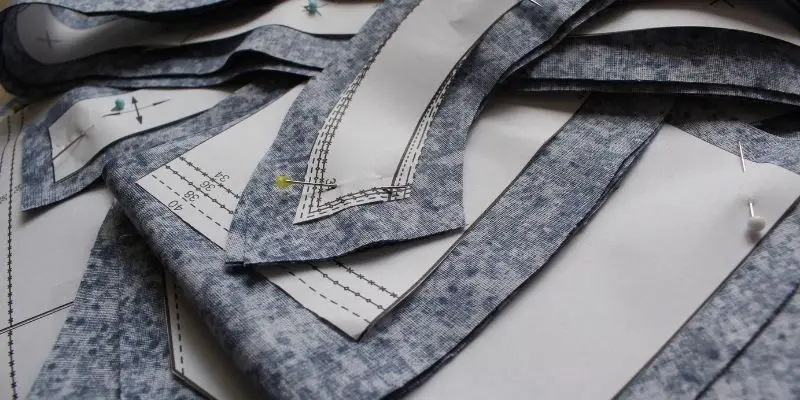As a beginner sewer, facing is something you hate the most. Still, if you master it, your fabric will be finished in a neater, more appealing, and professional manner.
Now, what is facing in sewing? The extra garment that is sewed inside and linked to the piece of fabric you’re working on to give it a finished look is known as facing. It is usually connected to the necklines, waistlines without waistbands, and armholes of sleeveless clothes to shape and enhance their design.
The facing isn’t visible on the outside of the garment; instead, it faces your body. Besides, they’re usually made of the same material as the outside of your garment. This not only gives your garment support but also prevents it from stretching and fraying.
For novice sewers, skipping the facing may seem like a good idea. Still, the ultimate result won’t be as appealing as the one depicted in the pattern. As a result, facing is essential for giving your garment a professional and neat appearance.
Do you have a particular question about facing in sewing? Then use the table of contents below to jump to the most relevant section. And you can always go back by clicking on the arrow in the right bottom corner of the page. Also, please note that some of the links in this article may be affiliate links. For more details, check the Disclosure section at the bottom of the page.
What are the uses of facing?
Facings are applied to the necklines (without collars), armholes (in sleeveless garments), hems, and fabric openings to make sure they exhibit a professional look once they’re finished.
Attaching a facing to a garment not only extends the garment’s shelf life (by preventing the fabric from fraying and stretching), but it also improves the cloth’s aesthetic appeal. Without facing, your garment will always have a raw edge, lowering the quality and appearance of your sewed fabric.
Apart from garment-facing, facings are also applied to home decor items such as quilts, curtain hems, etc.
What is the difference between facing and interfacing?
As previously stated, facing gives your fabric a better look and finish, making it more pleasing to the eye.
On the other hand, interfacing is a special fabric (of the same weight as the exterior fabric) applied to the garment’s opposite side to offer support, bulk, and stiffness, such as a shirt collar or a button placket.
Types of facing in sewing
The most commonly used types of facing are:
- Shaped facing
- Extended facing
- Bias facing
- Decorative facing
- Straight facing
Shaped Facing
Shaped facing a piece of cloth that must be cut from the same form as the garment and on the same grain to prevent any twisting in the fabric. Necklines and armholes are the most common places to employ shaped facing. Before sewing, you can use a shaped facing of the same fabric as the garment or other light fabrics.
Extended Facing
Extended facing (as the term ‘extended’ itself elaborates) is the type of facing which is cut to extend the length of the garment. The trimmed facing is then folded back along the edge of the garment to enhance the finishing of the fabric. Instead of necklines and armholes, extended facing is used in a straight line with the front and back of the fabric.
Bias Facing
Bias facing is typically made of lightweight fabric and cut in a narrow strip to mold easily to the curve of the edge to which it is intended to be attached. Bias facing is frequently constructed of the same fabric as the garment to blend in with the fabric’s color and disguise any bulky seams that might show through.
Decorative facing
Decorative facings, also called inverted-shaped facings, are often used in contrasting colors on the front side of the garment. The purpose of decorative facing is to enhance the fabric’s charm as it gives a unique and attractive look to your garments.
How to perform straight-facing sewing?
To stitch a straight face, line up the correct sides of the garment with the facing. If you’re a beginner, pin the facing to the garment for a more professional look. Stitch a 1-centimeter seam allowance for optimum results, and use tape if you’re unsure.
Now place the cloth beneath the sewing machine and attach the facing to the bodice with a straight stitch. After that, trim the seam allowance to the point where it doesn’t appear bulky. Stitch the seam allowance to the facing, close to the stitching line, for understitching the straight facing. Finally, press the bodice by turning it right-side out.
Credits: photos by Canva

Disclosure: at sewingyourstyle.com we only write about the products that we’ve researched and considered worthy. But it’s important to mention that we are a participant of several affiliate programs, including Amazon Services LLC Associates Program, an affiliate advertising program designed to provide a mean for us to earn fees by linking to Amazon.com and affiliated sites. As an Amazon Associate sewingyourstyle.com earns from qualifying purchases.


